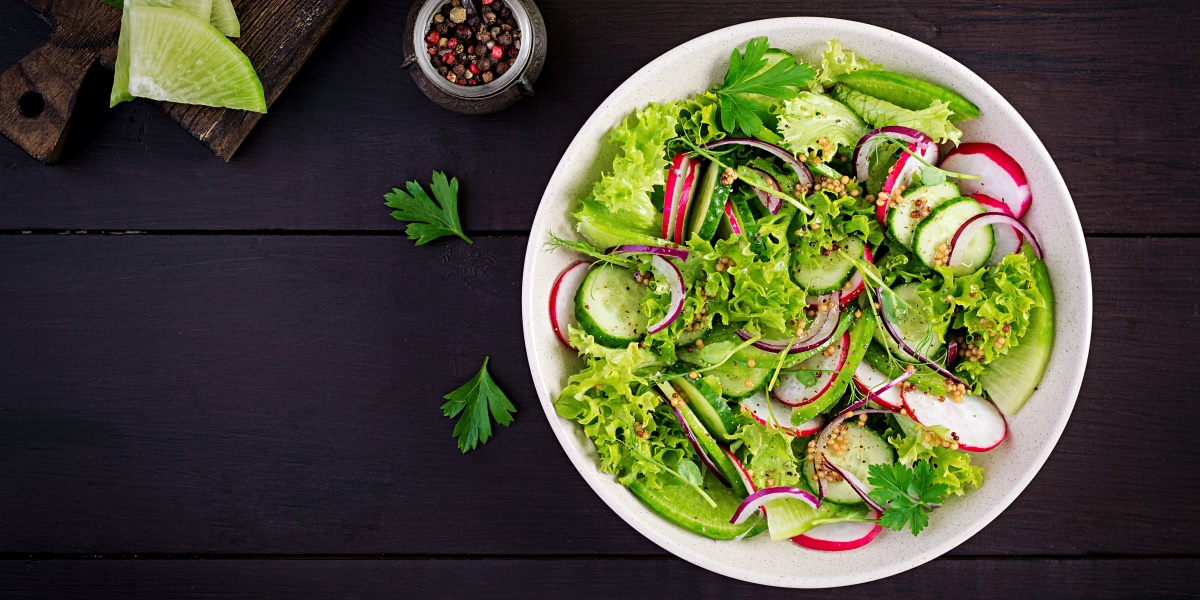Opinion: Salad days

Edward Weston, marketing executive for Savanta, on how to eat healthily during a cost-of-living crisis...
In today’s climate, it’s become increasingly challenging for consumers to uphold a healthy and nourishing lifestyle. Ongoing pressure on budgets means that healthier eating options are more considered and sometimes perceived as being out of reach – especially when they come at a price premium.
This quarter, the number of consumers claiming to be healthy has declined, despite aspirations to live a healthier lifestyle (which remains strong across all ages and socio-economic groups).
When it comes to grocery shopping, consumers are stretching their budgets by reducing waste, buying lower quantities and changing their meal preparation habits. Some 56% have cut back on the quantity of their food purchases, while others are taking more drastic measures and skipping meals altogether.
These cost-saving strategies may not be limited to grocery shopping. We could begin seeing this trend impacting eating out visits too, as diners become more conscious about portion sizes and opt for smaller plates or shared dishes.
While consumers are willing to make these sacrifices, taste and quality remain top of their priority list when selecting meals – an area that they’re unwilling to compromise on.
Despite a slight improvement in overall consumer economic confidence last quarter, the trend of scaling back on healthy living persists. Stress and anxiety remain the primary factors (cited by 50% of respondents as the cause of their decreased focus on health).
Associated costs (38%) and lack of willpower (34%) also contributed to the decrease in healthy eating. Nevertheless, the majority of consumers (58%) agree that they should do more for their health, showing a strong desire to make positive changes.
According to Savanta’s Grocery Eye report, high-quality ingredients and minimally processed foods still hold importance with many consumers, but other considerations like natural ingredients and using British produce have taken a slight backseat. For eateries, this presents an opportunity to cater to consumer preferences, by offering a balance between taste, quality and health considerations.
By incorporating high-quality ingredients and providing options that align with the growing demand for natural and locally sourced produce, brands can capture the attention and loyalty of health-conscious diners while also keeping costs low.
Healthy eating is a complex topic, and every consumer probably has their own idea of what it means. But what Savanta’s Grocery Eye data shows is that those definitions are becoming increasingly different across generations, providing a real challenge for the hospitality sector, which needs to ensure that it delivers a range of products and communications that work for all shoppers.
Gen z, for example, has a stronger focus on nutritional content and prefers free-from diets in an authentic and easy-to-prepare format. Baby boomers, on the other hand, seek wholesome, natural and local ingredients to cook from scratch, while managing their sugar and salt intake.
While the desire to eat more healthily remains strong, the path to achieving it varies greatly depending on disposable income and age. We're also witnessing gen z redefining what healthy means, looking for quick and easy ways to get their nutrients while adhering to gluten-free and dairy-free ‘free-from’ diets.
There is an opportunity for restaurants and food business to stay attuned to shifting food and drink trends. This will empower your brand to grow menu offerings and business strategies around a fragmented market. So, whether you're am out of home outlet owner or a passionate food enthusiast, keep these insights in mind as you adapt to the ever-evolving landscape of healthy eating.













